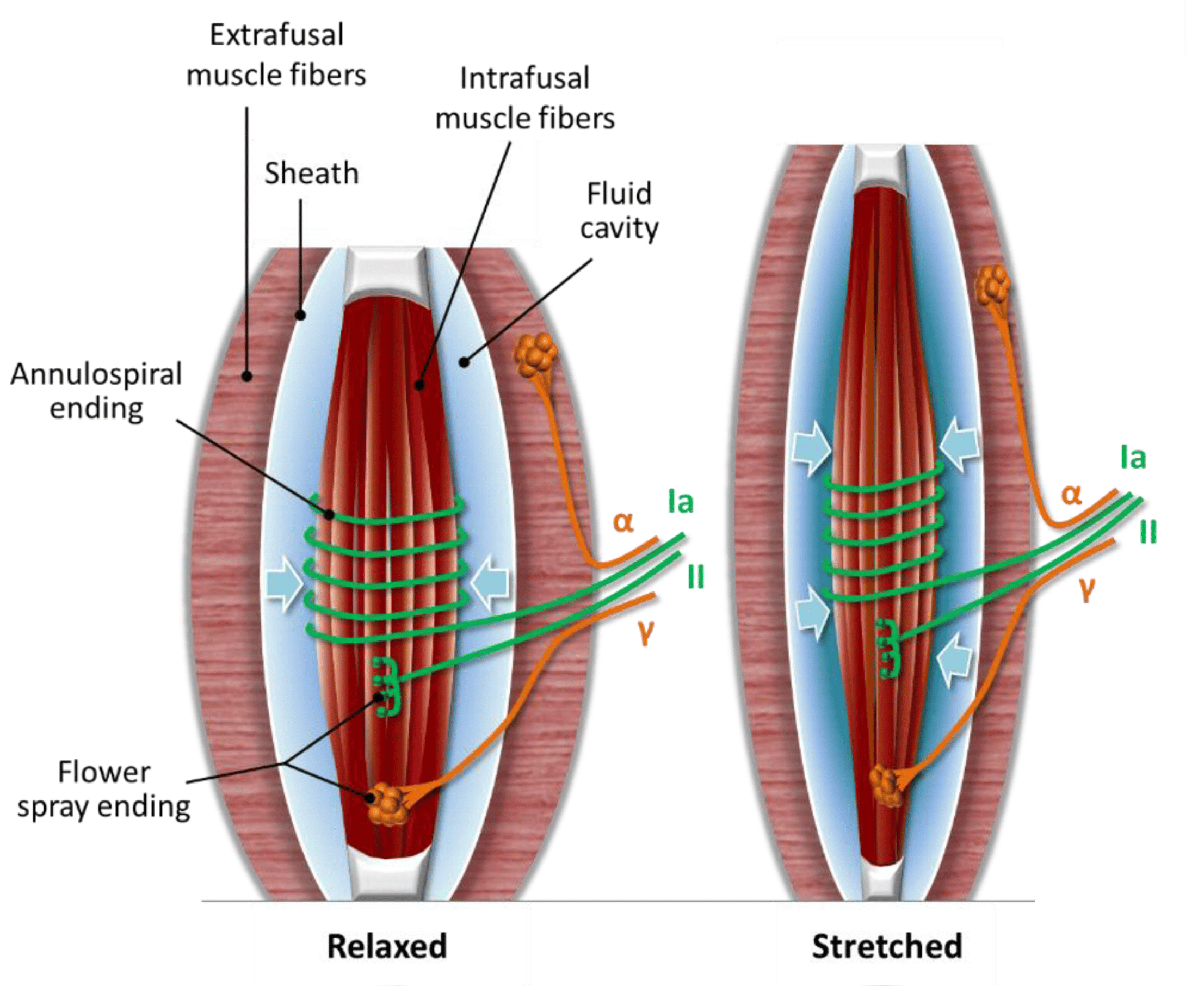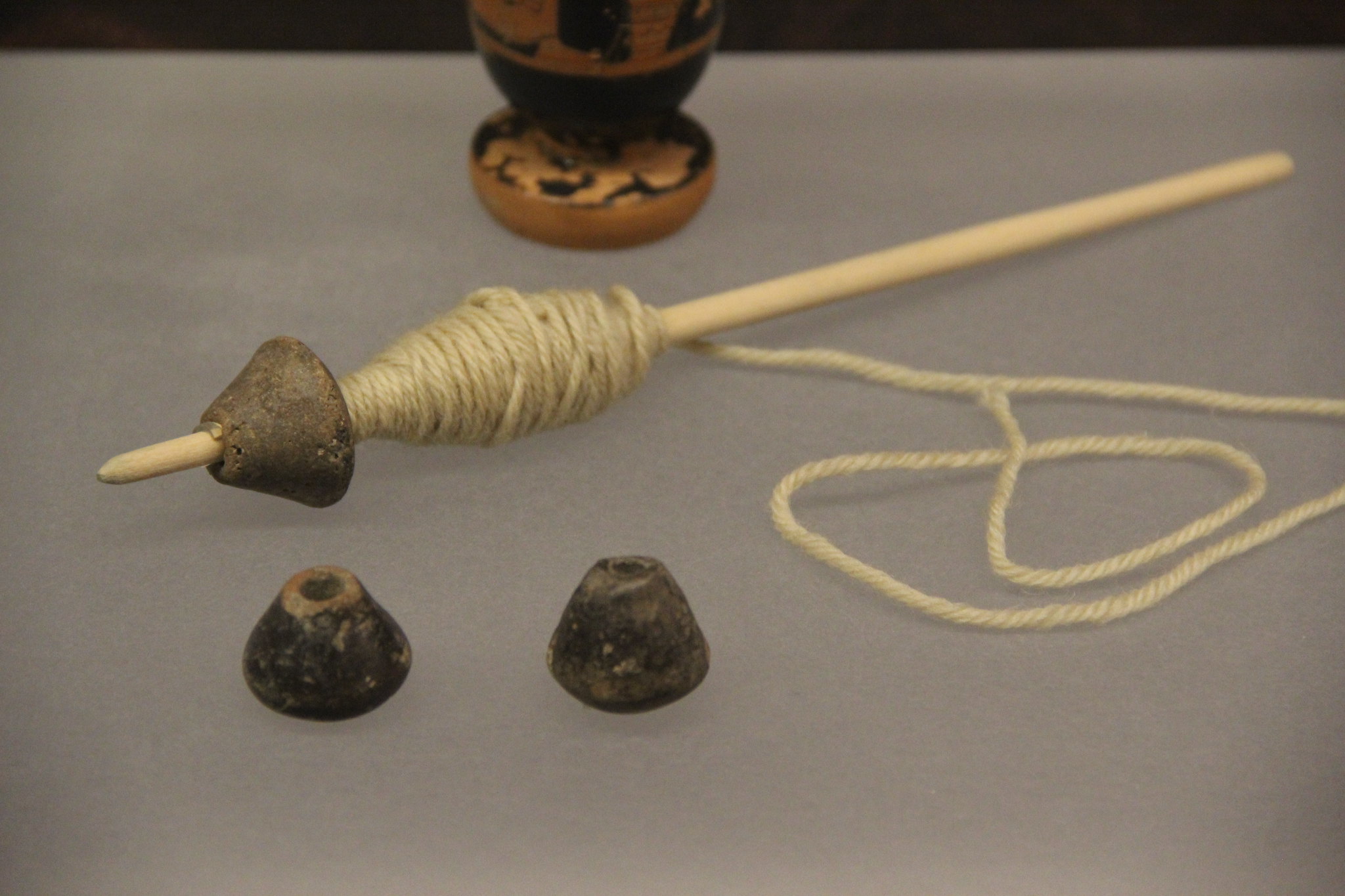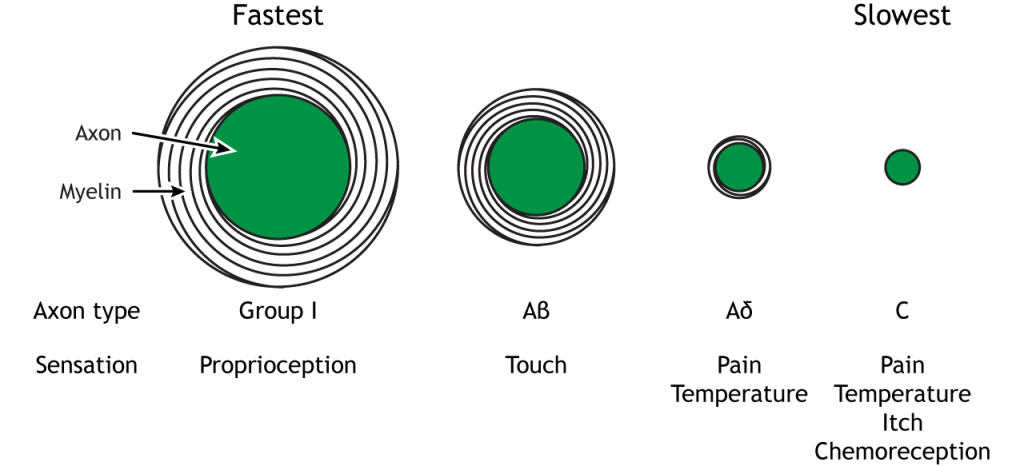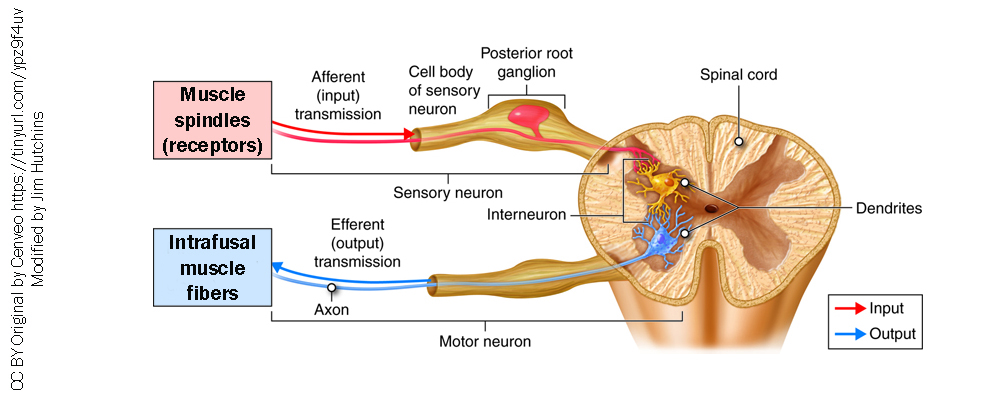The Gamma Loop: Sensory Feedback from Muscle
Caleb Bevan
Objective 5: Explain the anatomy and function of the gamma loop.
The Intrafusal Muscle Fiber and the Muscle Spindle
 In previous chapters, we have focused on the muscle fibers that are innervated by α motor neurons and which generate contractile forces in muscle.
In previous chapters, we have focused on the muscle fibers that are innervated by α motor neurons and which generate contractile forces in muscle.

But there are also muscle fibers inside muscle that still contract, but do not generate force. What are they doing there? They act as sensory receptors, detecting the state of stretch of the muscle. These are called intrafusal muscle fibers because they taper to a point at either end with a thin cylindrical body. Another name for this shape is spindle-shaped, after the similarly shaped part of a spinning wheel used to make yarn. (The Latin word fusus means “spindle”). In general, muscle spindle is the phrase used when we focus on the sensory function of these fibers, while intrafusal muscle fiber is the anatomical term.
The force-generating muscle fibers that are innervated by α motor neurons are called extrafusal muscle fibers because they surround the muscle spindle.
Two types of sensory neurons have endings in the muscle spindle which send a train of action potentials to the central nervous system when the muscle is stretched.
- Annulospiral endings give rise to class Ia sensory axons, which are the largest and fastest axons in any animal.
- Flower-spray endings give rise to class II sensory axons, which are considerably slower.
Why are Ia sensory axons the fastest in any animal? All animals need to know the state of stretch of their muscles. This information is a large part of what is called proprioception, the knowledge of where your body is positioned in space. Without proprioception, movement would be ineffective, which happens in some nervous system diseases and injuries.
There are also two types of motor neuron found in muscle.
- α motor neurons synapse onto force-generating extrafusal muscle fibers. These propagate action potentials almost as quickly as the Ia sensory axons.
- γ motor neurons synapse onto non-force-generating, purely sensory muscle spindles (intrafusal muscle fibers). These are capable of shortening, but are too small to move anything around. They only change their own length, as we’ll see below.


The Gamma Loop

As the muscle spindle signals that the entire muscle is shortening, that signal is conveyed back to the γ motor neurons also found in the ventral (anterior) horn of the spinal cord. The shortening of muscle means that intrafusal muscle fibers are also shortened.
The Gamma Loop Keeps the Muscle Spindle in the Middle of Its Dynamic Range

The muscle spindle can only send an effective signal to the central nervous system when it is tightly stretched within its capsule.
When the extrafusal muscle fibers contract, they shorten. If the muscle spindle were to stay the same length, it would go slack and no longer send a signal about muscle length. Essential information about the state of stretch of muscle, necessary for proprioception, would be lost.
Engineers define dynamic range as the span of energies where a system can still generate a usable output. The gamma loop keeps the muscle spindle in the middle of its dynamic range, so it can signal even tiny changes in muscle length. In audio terms, for example, we can’t hear differences in volume when the volume knob is at zero or 10. The knob is set to never go beyond the dynamic range of the amplifier. That’s why turning the knob to 11 doesn’t work. 11 is outside the dynamic range of the amplifier.
In order to keep the muscle spindle near “5”, so that a small “turn of the knob” produces a different sensory experience, is the job of the gamma loop. A phenomenon called α–γ coactivation ensures that both α motor neurons innervating the force-generating extrafusal fibers and γ motor neurons innervating the sensory intrafusal fibers fire a train of action potentials at the same time, so that the muscle spindle remains taut and able to signal small changes in muscle length.
Media Attributions
- Muscle spindle antioxidants © Balazs Sonkodi, Istvan Berkes, and Erika Koltai is licensed under a CC BY (Attribution) license
- Spindles © Gary Todd is licensed under a Public Domain license
- Axon diameters and conduction velocities © Jim Hutchins is licensed under a CC BY-SA (Attribution ShareAlike) license
- Somatosensory Axon Types © Casey Henley is licensed under a CC BY-NC-SA (Attribution NonCommercial ShareAlike) license
- Gamma loop receptor effector © Cenveo adapted by Jim Hutchins is licensed under a CC BY-NC-SA (Attribution NonCommercial ShareAlike) license
- Gamma loop © Jim Hutchins is licensed under a CC BY-SA (Attribution ShareAlike) license

